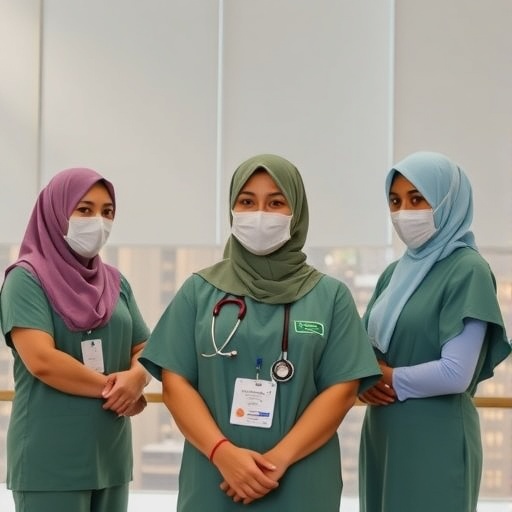At the APS March Meeting in Denver, scientists will present their research on the ways people use networks to share information — beginning with communication
![]()
Credit: Fabio Saracco
DENVER, COLO., FEBRUARY 28, 2020–Tracking communication and movement in this hyperconnected world can seem overwhelming. People (and things) share information through countless platforms. Networks online and off both impact how people live their lives and interact with their surroundings. Scientists will present their findings on the dynamics and structure of communication at the 2020 American Physical Society March Meeting.
Babies “Forage” for Words
Language is an example of a network, or a structure designed to spread information. Most people learn to communicate during their infancy and this process has been extensively documented. But how infants vocally experiment during the day-to-day is less studied.
“Our hypothesis was that vocal responses from adults would serve as rewards for infants,” said Ritwika Vallomparambath Panikkassery Sugasree, a physicist at the University of California, Merced.
In a new study, she and her colleagues examined how infants and adult caregivers’ vocal interactions influence infants’ exploration of language development. The results suggest babies “vocally forage” or search for vocal sounds that have value. These daily interactions could contribute to their overall linguistic development.
Determining the Best Communication Structures
People use language to convey phrases and concepts. Each language comprises a network that facilitates the transfer of information. Examining the structure of these networks helps scientists identify the features that support the efficient communication of information.
“If you were going to design a language, you would want it to convey a lot of information when you’re speaking, but also to do so efficiently so that people’s internal ideas in their head of what the structure looks like is similar to what the structure actually is,” said Lynn, a statistical physicist at the University of Pennsylvania.
He and his colleagues measured how much information networks could convey and how efficiently they communicate that information. The team found that most successful networks combined community structure with heterogenous structure. In community structure, a specific word invokes a “community” or cluster of other words commonly associated with it, enabling people to anticipate what information comes next. In heterogeneous structure, there are hubs of hyperconnectivity that bridge the entire network, allowing networks to communicate much more information.
The importance of accounting for our neighbors’ biases in our own opinions
Effective use of information from one’s social network is important, especially accounting for neighbors’ biases, according to a new mathematical model by Zachary Kilpatrick, an applied mathematician at the University of Colorado, Boulder. He and his colleagues gave rational agents pieces of evidence in favor of choice A or choice B. Each agent could have an innate bias for choice A or choice B. Their preference determined how easily persuaded they were by pieces of evidence provided in favor of one choice or the other.
The results suggest that when an individual doesn’t make a decision after receiving evidence, their neighbors see that lack of a decision as a reflection on the direction of this evidence. The researchers also found that, in large social networks, a single agent’s decision can generate a chain reaction in favor of that decision.
Social Media’s Impact on Decision-Making
The spread of information, or misinformation, across social media networks can sway people’s political decisions. By examining how information from the 2018 Italian election diffused through Twitter, Guido Caldarelli and his colleagues developed a method to anticipate how political groups develop and share their opinions on Twitter.
“There’s been a lot of concern about how these social networks influence in some way the results of the elections and we wanted to study how the vast majority of people get a political idea from social networks about what’s going on” said Caldarelli, a statistical physicist at IMT Alti Studi Lucca.
The team found that in Italy the right wing party has a more compact Twitter presence while the left is more fragmented online in the Italian online political debate. Their results also suggest that the more unified a political group is online, the better able it is to maintain a coherent and efficient set of bots to promote its message.
Tracking Movement in Offline Networks
People also live in tangible, geographic networks. Residential populations have racial and spatial biases that influence how they choose the location where they live. Using a migration model, Yuchao Chen and his colleagues simulated how residential segregation appears in urban centers.
“By combining these two factors, we can predict the spatial distribution of all the [people] in the city for each block,” said Chen, a physicist and demographer at Cornell University, “It’s a completely new type of prediction that no one else has done before.”
The team found that how people choose where to live is defined by two factors: social preference and spatial preference. Social preference is the desire to live next to people of the same race or ethnicity. Spatial preference is the desire to live in a housing situation with a specific price range, size, and other influences. Both preferences dictate how people migrate to areas in residential networks over time.
Connected Cars On Single Lane Roads
Connected cars can communicate with outside systems, like navigation technology or smartphones. However, their connectivity lets these cars be easily hacked. Moreover, a large-scale hack of connected vehicles can have severe impacts on transportation. Skanda Vivek, a statistical physicist at the Georgia Gwinnett College, and his colleagues developed a new model that suggests that even a small hack can still have big consequences for urban traffic.
The researchers studied scenarios where hacked vehicles act as obstacles that block roads. They found that when only 5% of roads were blocked in the model grid, the entire street network experienced a significant traffic slowdown. This is because the initial hack caused road blockages, which disrupted surrounding traffic patterns in a domino effect.
“To block a major portion of a city’s roads, a hacker doesn’t need to hack vehicles on all of those roads,” said Vivek, “Even a lower fraction of hacked vehicles that lead to a small fraction of roads being blocked eventually cascades to catastrophic disruption of city wide traffic.”
###
A Foraging Approach to Analyzing Infant and Caregiver Vocal Behavior
TIME/DATE/PLACE: 4:42 PM-4:54 PM, Monday, March 2, 2020, Room: 301
CONTACT: Ritwika Vallomparambath PanikkasserySugasree, [email protected]
Human Information Processing in Complex Networks
TIME/DATE/PLACE: 4:06 PM-4:18 PM, Wednesday, March 4, 2020, Room: 303
CONTACT: Chistopher Lynn, [email protected]
Optimal Evidence Accumulation on Social Networks
TIME/DATE/PLACE: 4:18 PM-4:30 PM, Tuesday, March 3, 2020, Room: 304
CONTACT: Zachary Kilpatrick, [email protected]
Statistical Physics and Twitter Analysis
TIME/DATE/PLACE: 8:12 AM-8:24 AM, Friday, March 6, 2020, Room: 401
CONTACT: Guido Caldarelli, [email protected]
Predicting Residential Segregation Using Statistical Physics Approaches
TIME/DATE/PLACE: 4:06 PM-4:18 PM, Monday, March 2, 2020, Room: 301
CONTACT: Yuchao Chen, [email protected]
Cascading Dynamic Slowdowns Around Hacked Vehicles
TIME/DATE/PLACE: 8:48 AM-9:00 AM, Friday, March 6, 2020, Room: 401
CONTACT: Skanda Vivek, [email protected]
ABOUT THE MEETING
The American Physical Society (APS) March Meeting is a major international conference and the largest physics meeting of the year. In 2020, the APS March Meeting will convene from March 2-6 at the Colorado Convention Center in downtown Denver.
Useful Links
Meeting website: https:/
Scientific program: http://meetings.
Press services: https:/
Hotel & Travel information: https:/
Press Registration
Complimentary registration is available to journalists for the express purpose of gathering and reporting news and information from the meeting. Staff reporters, freelance writers, and students are welcome to apply. Press credentials may be obtained by completing the form on this page: https:/
Press Conferences
All press conferences will take place in Room 608. If you are unable to attend, you may register to watch and ask questions online at https:/
Press Room
A press room for registered journalists will operate throughout the meeting in Room 610/612 and will offer complimentary coffee, breakfast, and lunch. The press room may be reserved for conducting interviews.
Hours
Monday – Thursday, 7:30 a.m. – 6:00 p.m.
Friday, 7:30 a.m. – 2:45 p.m.
Please contact the APS Press Office with any questions at [email protected].
ABOUT APS
The American Physical Society is a nonprofit membership organization working to advance and diffuse the knowledge of physics through its outstanding research journals, scientific meetings, and education, outreach, advocacy, and international activities. APS represents over 55,000 members, including physicists in academia, national laboratories, and industry in the United States and throughout the world. Society offices are located in College Park, Maryland (Headquarters), Ridge, New York, and Washington, D.C.
Media Contact
APS Press Office
[email protected]




